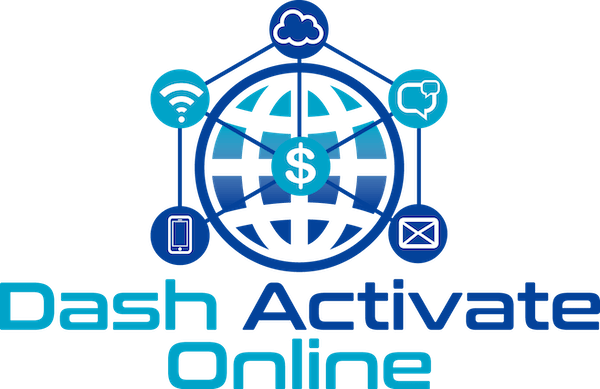As a world-class Facebook Ads agency, staying ahead of platform updates is crucial to maintaining and enhancing the performance of our clients’ campaigns. Recently, Meta has started rolling out a series of exciting algorithm updates that are set to revolutionize how we approach ad optimization. While these changes are undoubtedly positive, they may cause some short-term volatility in CPMs (Cost Per Thousand Impressions). Here’s a deep dive into what these updates mean for your campaigns and how you can leverage them to your advantage.
1. CPM Volatility: A Sign of Positive Change
If you’ve noticed your Meta CPMs skyrocketing recently, don’t panic. Meta’s latest platform-wide algorithm updates are designed to improve ad performance in the long run. While this may lead to some initial fluctuations in CPMs, the good news is that the impact on conversion rates has been overwhelmingly positive. In fact, some brands are seeing a 30% increase in CPMs, but with a proportional boost in performance thanks to improved conversion rates.
The key here is patience. As the algorithms adapt and optimize, the initial cost spikes should stabilize, leading to more efficient ad spend and higher returns over time. It’s a reminder that while short-term metrics like CPMs are important, focusing on long-term outcomes like ROI and conversion rates will yield better results.
2. Introducing Conversion Value Rules: A Game-Changer for Campaign Optimization
Meta is currently rolling out a powerful new feature called Conversion Value Rules in Ads Manager. This tool allows advertisers to express which audiences or conversions they value more or less, enabling more nuanced campaign optimization.
Key Benefits:
- Higher Value Assignments: Advertisers can now assign higher value to specific customer segments without needing to create separate campaigns. For example, if 30-40-year-old females have a 2x higher lifetime value (LTV) compared to other demographics, you can now assign them a higher bid value within a single campaign. This granular level of optimization allows for greater automation and potentially improved performance across diverse customer segments.
- Improved Automation: By communicating these nuanced values to Meta’s AI-driven systems, advertisers may see improved overall campaign performance. This is particularly useful for businesses with varying customer lifetime values, as it enables more precise targeting and bidding without the complexity of managing multiple segmented campaigns.
How It Works: Advertisers can define rules to assign different values to conversions based on specific criteria. This flexibility allows for more granular optimization without needing to segment audiences into separate campaigns, making it easier to manage and scale your campaigns effectively.
Expected Impact: Meta believes that Conversion Value Rules will significantly enhance the ad system’s ability to optimize campaigns according to each business’s specific objectives and value metrics. This aligns with Meta’s broader efforts to enhance its advertising platform with AI-driven, data-informed optimizations.
3. New Attribution Setting: Incremental Conversions
Meta is introducing a groundbreaking new attribution setting called Incremental Conversions. This setting shifts the focus from merely driving as many conversions as possible to prioritizing conversions that would not have occurred without ad exposure—those that are truly incremental.
Key Features and Benefits:
- Focus on True Impact: Unlike traditional attribution models that count all conversions following an ad interaction, Incremental Conversions aim to measure and optimize for those conversions that are directly attributable to the ad. This provides a more accurate reflection of an ad’s true impact on driving new business.
- Comparison with Traditional Models: Traditional attribution models, such as last-click, first-click, linear, and time-decay, distribute credit across various touchpoints without distinguishing between conversions that would have happened organically and those driven by the ad. Incremental Conversions, however, isolate the impact of advertising by comparing the conversion rate of users exposed to ads against a control group that wasn’t.
- Improved Budget Allocation: By understanding which conversions are truly incremental, advertisers can allocate their budget more efficiently, focusing on channels and strategies that drive genuine business growth rather than spending on conversions that might have happened anyway.
- Performance Impact: In early tests, advertisers using Incremental Conversions saw an average improvement of over 20% in incremental conversions. This suggests that focusing on incremental impact can significantly enhance the overall effectiveness of your ad spend.
How It Works: Meta calculates incrementality by comparing the conversion behavior of users exposed to an ad against those who were not exposed, using aggregate data and conversion lift tests. While it’s impossible to pinpoint exactly which individual conversions are incremental, this approach provides a statistically significant estimate of an ad’s true impact.
Implications for Advertisers:
- More Accurate ROI Measurement: With Incremental Conversions, advertisers gain a clearer picture of the true return on investment (ROI) from their ad spend. This allows for better-informed decisions on where to allocate budgets.
- Enhanced Campaign Optimization: By focusing on driving conversions that wouldn’t have occurred without ad exposure, this setting can lead to more efficient use of ad budgets, reducing wastage, and improving overall campaign performance.
- Strategic Budget Allocation: Marketers may find that certain channels or campaigns have a higher incremental impact than previously thought, leading to a shift in budget allocation strategies toward those high-impact areas.
4. Enhanced Third-Party Analytics Integrations
Meta is expanding its integrations with third-party analytics tools like Google Analytics, Northbeam, Triple Whale, and Adobe. These integrations will allow advertisers to share multi-touch attribution data with Meta, helping to optimize campaigns based on the most accurate and relevant data available.
Key Advantages:
- Holistic View: By integrating with these third-party tools, advertisers can gain a more holistic view of the customer journey, enabling better cross-channel optimization and more informed decision-making.
- Customization: These integrations provide the flexibility to align your Meta campaigns with your preferred source of truth, ensuring that your campaigns are optimized for the metrics that matter most to your business.
5. Algorithm Update for Cross-Publisher User Journeys
The latest algorithm update from Meta emphasizes cross-channel user journeys, aiming to drive more incremental conversions. This update has already shown a 30% improvement in advertiser performance, as measured by third-party analytics tools. By accounting for user interactions across multiple publishers, Meta’s algorithm ensures that your ads are reaching the right audience at the right time, regardless of where they are in their customer journey.
6. CRM Data Integration for Advanced Targeting
Meta is also introducing the ability for businesses to connect their CRM and analytics tools directly to Meta’s ad system via a simple API setup. This integration, starting with Google Analytics and Northbeam and expanding to other platforms like Triple Whale and Adobe, is expected to continue into 2025.
Why This Matters:
- Enhanced Targeting: By feeding CRM data directly into Meta’s ad systems, advertisers can provide more detailed insights into customer behaviors and preferences, which Meta can then use to fine-tune ad targeting. This will lead to more precise audience segmentation and campaign customization.
- Continuous Optimization: Over time, Meta’s AI models will use this data to improve campaign optimization, potentially leading to higher conversion rates and better overall ad performance.
Conclusion: Embrace the Change
Meta continues to lead the pack when it comes to advertising platforms, and these updates further solidify its position as the go-to choice for advertisers. While the short-term CPM volatility may cause some concern, the long-term benefits of these updates are clear. By staying informed and adapting your strategies to leverage these new features, you can ensure that your campaigns not only survive but thrive in this ever-evolving digital landscape.
As always, we’re here to help you navigate these changes and make the most of Meta’s latest innovations. With our expertise and Meta’s cutting-edge tools, the future of your advertising campaigns looks brighter than ever. 🚀





